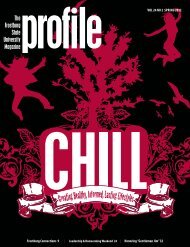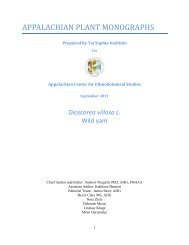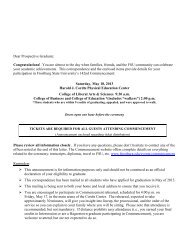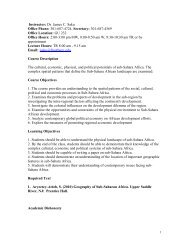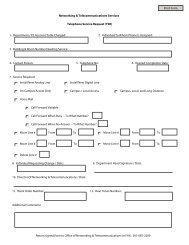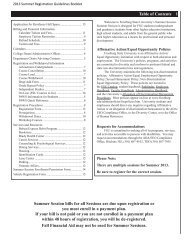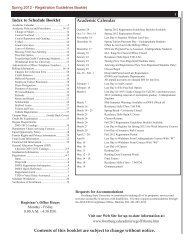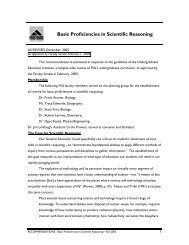Boneset – Eupatorium perfoliatum L - Frostburg State University
Boneset – Eupatorium perfoliatum L - Frostburg State University
Boneset – Eupatorium perfoliatum L - Frostburg State University
You also want an ePaper? Increase the reach of your titles
YUMPU automatically turns print PDFs into web optimized ePapers that Google loves.
appears to be little bothered by pests and disease (Hilty, 2002-2011). Jancke (2004) notes<br />
that boneset can also be field grown in Kansas under fairly dry conditions.<br />
Height: 2 to 5 feet<br />
Sun: Full sun to partial shade<br />
Soil: Prefers a rich, moist soil<br />
Water: Natural habitat is on wet sites, and plant prefers regular, deep watering.<br />
However, boneset also appears to withstand Kansas heat and drought fairly well.<br />
Propagation: Easily propagated from seeds or cuttings. Take cuttings before the plant<br />
has flowered. Seeds will germinate without stratification, but will germinate better with<br />
stratification. Seeds need light to germinate. Do not cover. Germination is typically two<br />
to three weeks, with 80 to 90 percent germination. Older plants can be divided and<br />
replanted in the spring. Plant on 18 to 24 inch centers, with row spacing of 24 to 30<br />
inches, because each plant will form a clump.<br />
Pests: No major pests<br />
Harvesting: Harvest aboveground portion when flowers are starting in early or<br />
midsummer.<br />
Dry quickly, or it will decompose. A second, fall harvest may be possible (Jancke, 2004).<br />
E. <strong>perfoliatum</strong> is being grown for seed by inmates at Michigan's Saginaw Correctional<br />
Facility as part of a program to restore the prairie at the Shiawassee refuge (Conat2010).<br />
7. Summary <strong>–</strong> some possibilities moving forward<br />
According to Millspaugh (1892) “There is probably no plant in domestic practice that has<br />
more extensive or frequent use” (in reference to E. <strong>perfoliatum</strong>) and it is mentioned in<br />
virtually all of the historic books on American plant medicine (Kindsher, 1992). With the<br />
advent of antibiotics and so called “magic bullets‟ in the 20 th century, traditional use of E.<br />
<strong>perfoliatum</strong> for respiratory infections and fevers has declined, and demand is confined<br />
largely to herbalists and phytotherapists in the USA and abroad. The decline in popularity<br />
has not been helped by unfounded reports that the species contains hepatotoxic<br />
pyrrolizide alkaloids (PAs), at a time when there is a great need for alternatives to<br />
antibiotics and to the influenza drugs now in use.<br />
Further analytical studies are needed to determine decisively whether PAs are present and<br />
if so, at what concentrations, as well as toxicological investigations to assess potential for<br />
acute or chronic adverse effects. Provided safety can be demonstrated by such studies, E.<br />
<strong>perfoliatum</strong> would be an excellent candidate for clinical research.<br />
9





